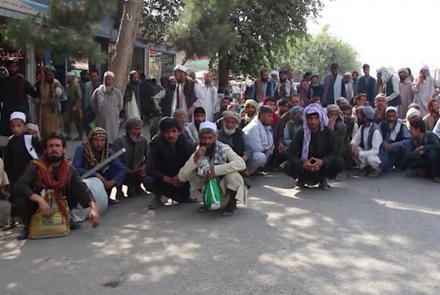A country already dealing with widespread poverty faced a larger economic crisis when Afghanistan's economic system was paralyzed when the republican government fell, and people from Kabul and other provinces rushed to the banks to withdraw their money.
After the collapse of the republic, Da Afghanistan Bank (Central Bank) put restrictions on private banks and money withdrawals from banks, and for the past year the international community has suspended all its assistance to Afghanistan.
"One of the poorest countries in the world has become much poorer," said Tobias Haque, World Bank Senior Country Economist for Afghanistan.
"The isolation of the Afghan economy following last August's political crisis risks...leading to grave poverty, displacement, fragility, and extremism threats," he told a briefing for the release of the World Bank's first development update on the country since August.
Following the collapse of the previous administration, the connections of the world's most reliable banks with Afghanistan were cut off.
The US Treasury Department put a freeze on Afghanistan's foreign exchange reserves worth more than $9 billion when the Islamic Emirate came to power.
According to the Ministry of Finance, the Islamic Emirate faced a limited Afghan treasury when it took control of the country.
"When we came, there was very little money in the treasury, all international help had been stopped, and there were difficulties in the first nights, but slowly, we activated all sources of income," Ahmad Wali Haqmal, spokesman of the ministry of finance said.
On August 15, 2021, 350,000 Afghan security forces suddenly lost their employment, and the economy fell into poverty.
Many members of the military and the civil service who held high and low posts in the republican administration became roadside vendors or decided to work as drivers.
Following the country's political upheaval, women were denied employment in government agencies.
Based on a report released by the UN on March 20th, 2022, 500,000 Afghans lost their employment in the previous six months, and more than 90% of the population now lives below the poverty line.
"Unfortunately, in the past year, the economy of Afghanistan has seen a number of very severe changes and developments. Almost every sector of Afghanistan's economy has suffered, and the Gross Domestic Product (GDP) has decreased dramatically,” said Shekaib Mir, expert on banking issues.
While at least three and a half billion new banknotes were printed every year, the Da Afghanistan Bank (Central Bank) was unable to print and distribute new notes during the past year.
After the previous administration was overthrown, a French company that had been contracted to print Afghan banknotes even refused to provide the Central Bank of Afghanistan the printed currency.
"Unfortunately, the private banks of Afghanistan are not in a good condition in the last year, particularly in terms of money transfers--additional limitations have been put on them," said Seyar Quraishi, an economist.
Hundreds of infrastructure projects in Afghanistan stopped working after August 15, 2021, and the Citizens' Charter Afghanistan Project (CCAP), which was regarded as the largest program to reduce poverty and create jobs, was suspended.
The Afghanistan Reconstruction Trust Fund (ARTF), which had collected about 1.5 billion dollars, gave some of this money to humanitarian organizations rather than development projects. The World Bank alone halted the implementation of seventeen large projects, costing seventeen billion afghanis.
The development of some major infrastructure projects in Afghanistan began in the past year. On April 4, 2022, Mullah Abdul Ghani Baradar, the first deputy prime minister of the Islamic Emirate, inaugurated the Qosh Tapa waterway in Balkh Province, which will irrigate 3.5 million acres of land.
Similar to this, Kajaki Dam's second phase was operationalized this month, increasing the dam's capacity from 50 megawatts to 150 megawatts.
"With the opening of this channel, the agricultural production of the nation will become self-sufficient, particularly in the grain sector, and assistance from foreign nations won't be required. The assistance of other countries cannot help a country develop,” Baradar said.
The value of Afghan currency has changed dramatically over the past year, with one dollar once equaling 130 afghanis until it dropped to less than 100 afghanis.
The price of food in the markets, particularly wheat and flour, increased as a result of the inflation of the Afghan currency and the conflict between Russia and Ukraine.
The World Bank stated on April 14, 2022, that Afghanistan's GDP will decline by 30% by the end of this year due to the economic crisis, resulting in extreme poverty, displacement, and extremist threat.


Comment this post